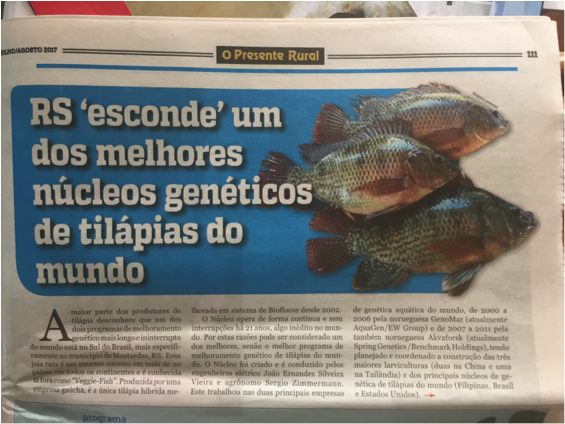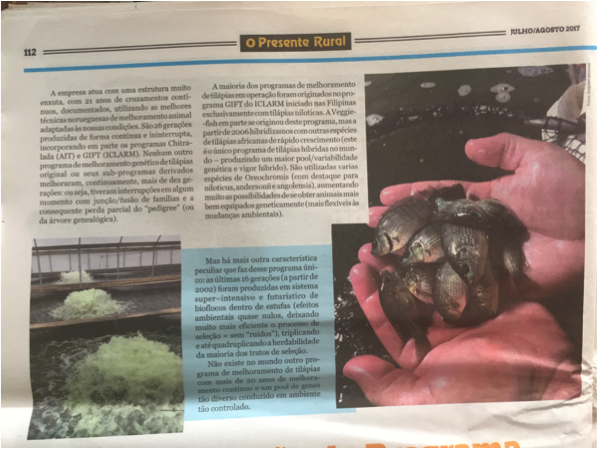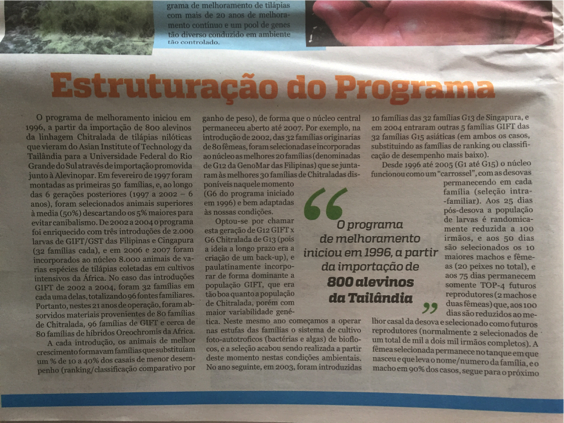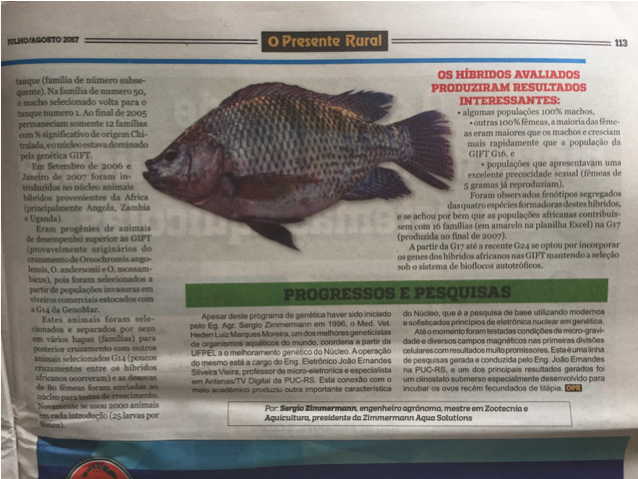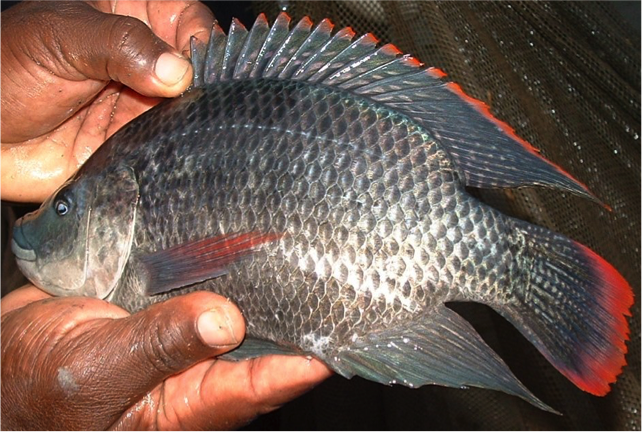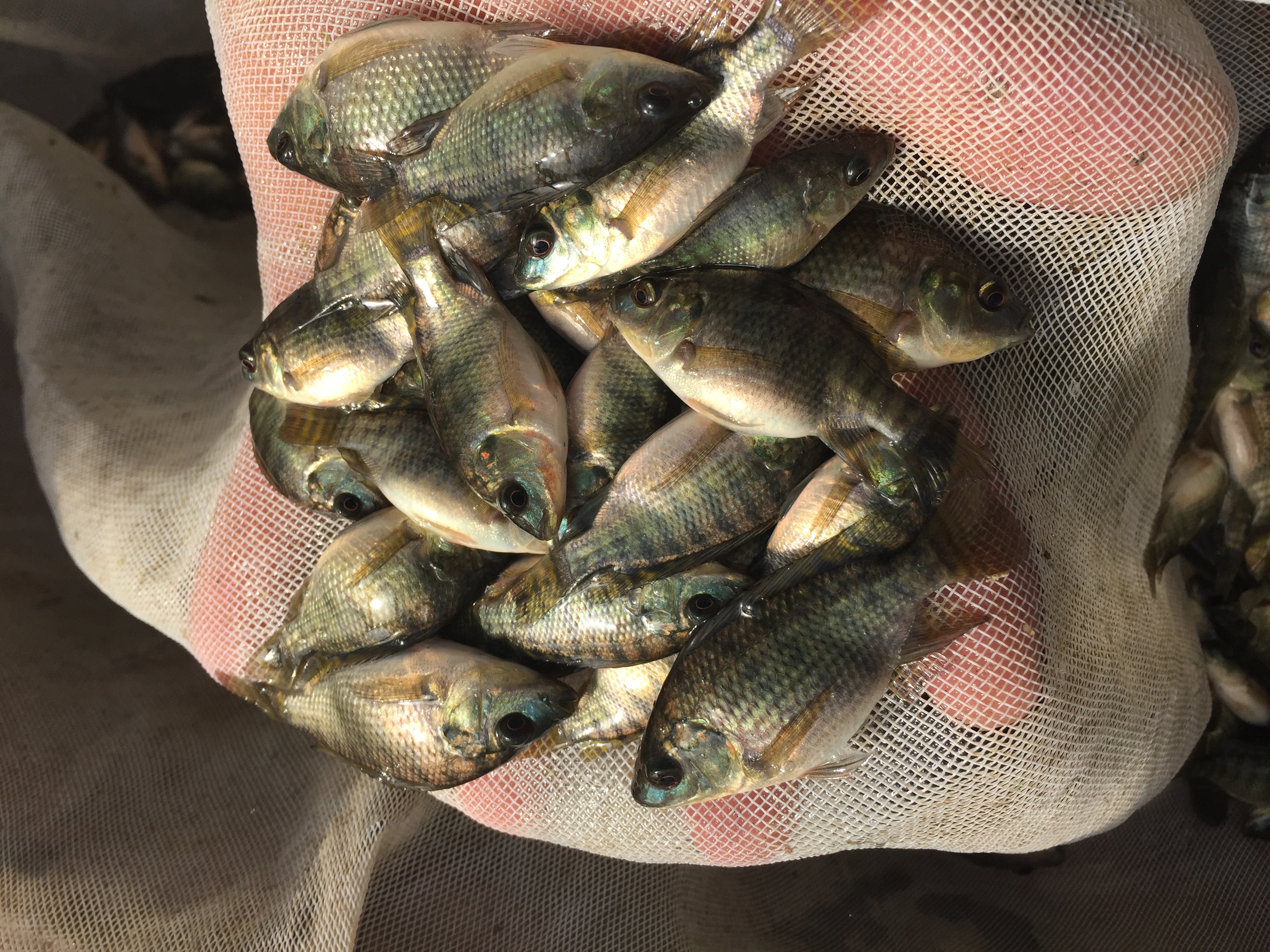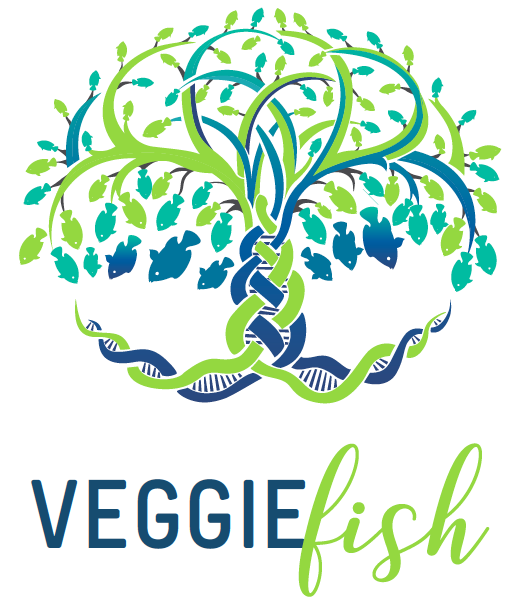
Growth Curve
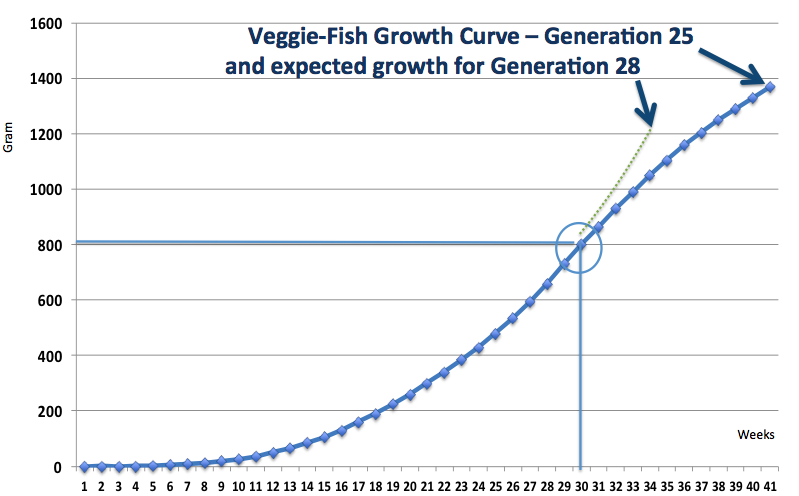
Veggie-Fish in a nutshell
1996-2002
g1-6
Importation of Chitraladas – Base population from 80 females, 800 fish = 50 families (inside family selection, rotating males).
2002
2002
g12
Incorporation of GST (GenoMar, Filipinas) and GIFT materials – total of 2,000 fish (from 32 families) forming 20 families in the Breeding Nucleus.
2002-2003
2002-2003
g13
Introduction of GenoMar Supreme from Singapore – GIFT/Supreme, 32 families, resulting in 10 new families incorporated to the Nucleus.
2004
2004
g14
Importation of 32 families of GIFT/GST Singapore resulting in the selection of 5 families incorporated to the Nucleus.
2005
2005
g15
Rotational Mix of 35 families GIFT/GST and 15 Chitralada selected families inside the Nucleus.
2006-2007
2006-2007
g16
Introduction of the African Hybrids after being evaluated agains the 50 families of the Nucleus, with a selection/mixture of the 16 African superior families in the program.
2007-2008
2007-2008
g17
First retro-crosses of African families mixed with Chitralada/GIFT/GST families.
2008-2015
2008-2015
g18-24
BLUP index and family homogenization of families introduced up to 2008.
2015
2015
g25
SNPs project with con Wageningen univeristy and evaluation of the Genetic x Environment interaction in several culture systems.
2018
2018
g27
Average Heritability in the last 15 years is 0.56.
BREEDING NUCLEUS
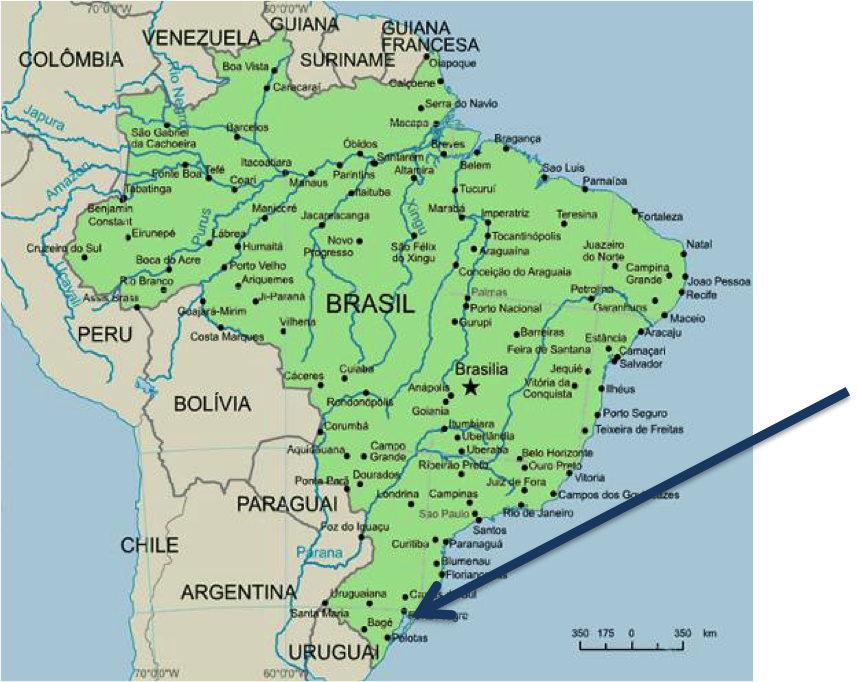
Produced since 1996 in the Breeding Nucleus Rei da Tilápia, located in Mostardas, Rio Grande do Sul. In 2019 we are producing the Generation 28 (G28).

- 24+ years in continuous operation (since 1996);
- Fully documented;
- 50+ families and preparing the 28th. Generation;
- Veggie-Fish is selected in Bioflocs since 2002;
- “It is likely to be the tilapia genetics with the highest penetration in Americas, 5.8% of the world” (Source: Inocap Report/Study – Norway, 2014);
- Main clients: Hatcheries in Latin America, China & Thailand;
- The latest 14 generations (since 2002) were produced in bioflocs (fully controlled environment), as a result, heritability was quadrupled nulling environment effects;
- Several hybrids of four species of Oreochromis are used, not just the Nile Tilapia (= multiplication of gene pool);
- Hatches interval between all families are 3 to 5 weeks, which guarantee better selection results.
SUPER-HYBRID
Veggie-Fish is a hybrid Tilapia line, with the following species:
(1)Oreochromis niloticus (Chitralada + GIFT + GST ) + several African tilapia species:
(2)Oreochromis angolensis,
(3)Oreochromis andersonii, and
(4)Oreochromis mossambicus.
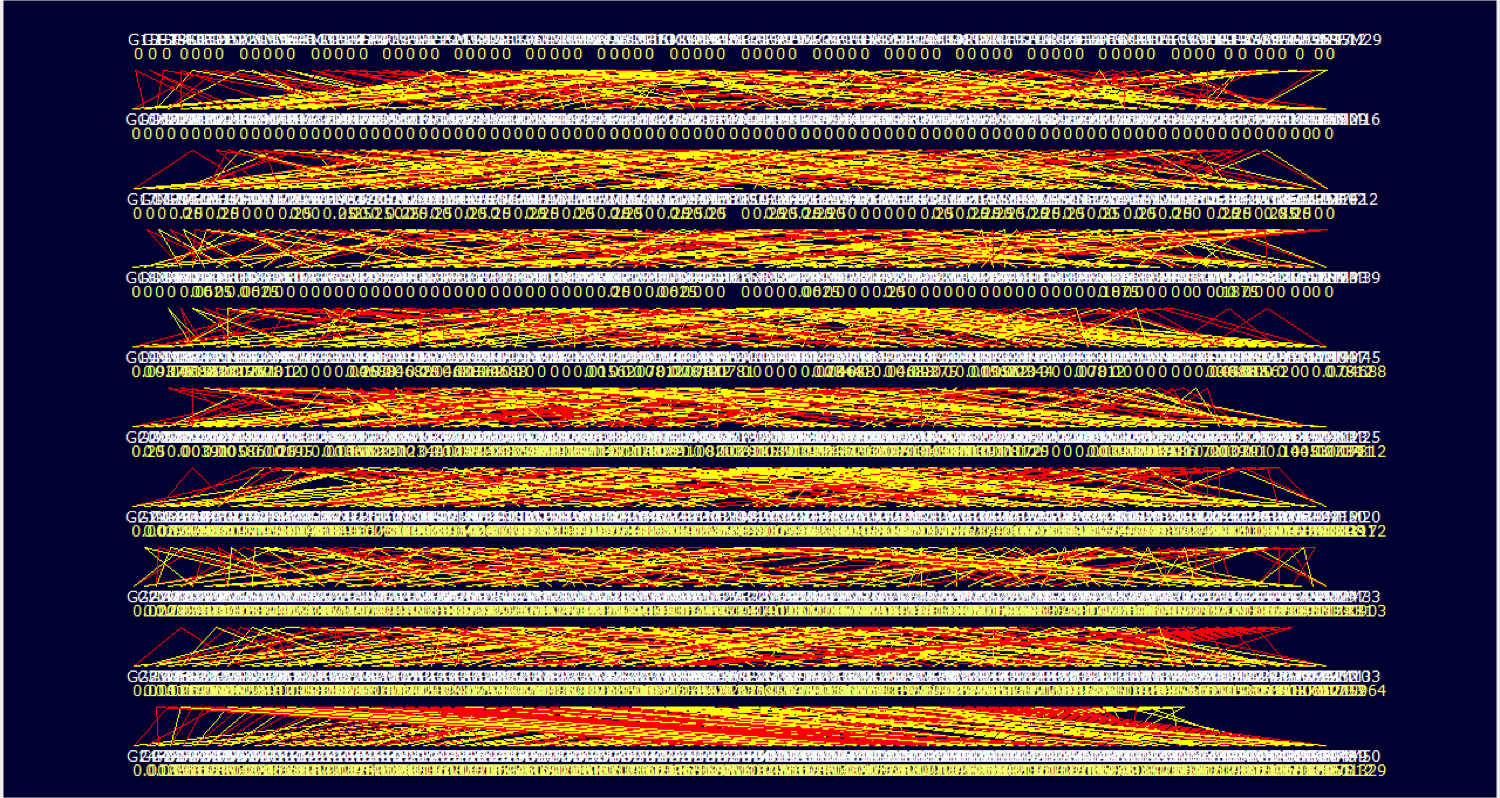
Pedigree of nine generations of Veggiefish produced in Bioflocs, G15 – G24.
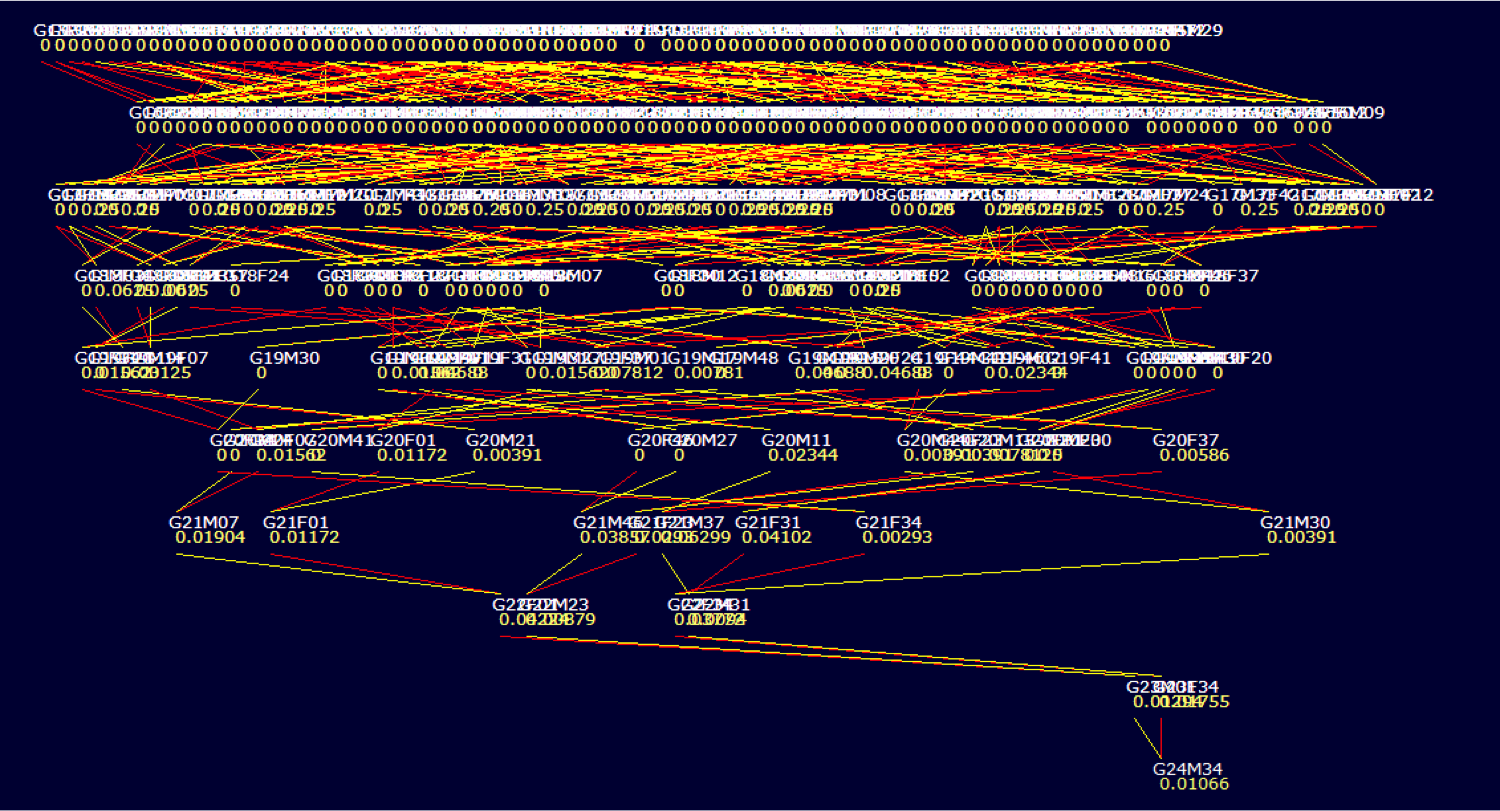
Example of the Male 34 (M34) pedigree form Geration 24 (G24) during 2015.
Heritability (h2) for growth in Bioflocs in the 6 last generations of Veggie-Fish:
G22 = 0.56 (2013)
G23 = 0.58 (2014)
G24 = 0.47 (2015)
G25 = 0.52 (2016)
G26 = 0.60 (2017)
G27 = 0.59 (2018)
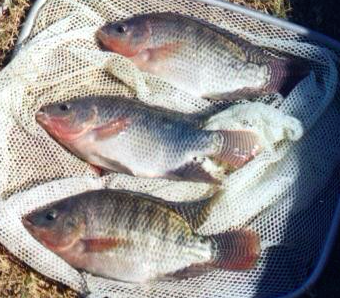
*The average h2 in the last 15 years was 0.56 ± 0.07, very high especially when compared to 0,12-0,24 typical of other breeding programs also originated from the GIFT material.
The UFMG also reported h2 up to 0.70 en bioflocs (2014).
GLOBAL PRESENCE
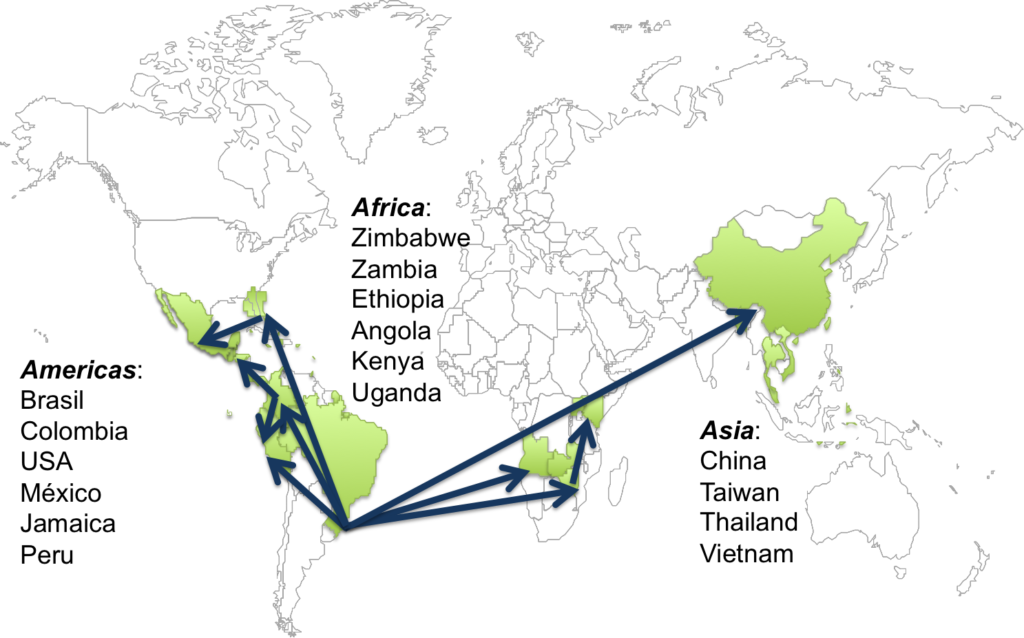
ON THE NEWS
